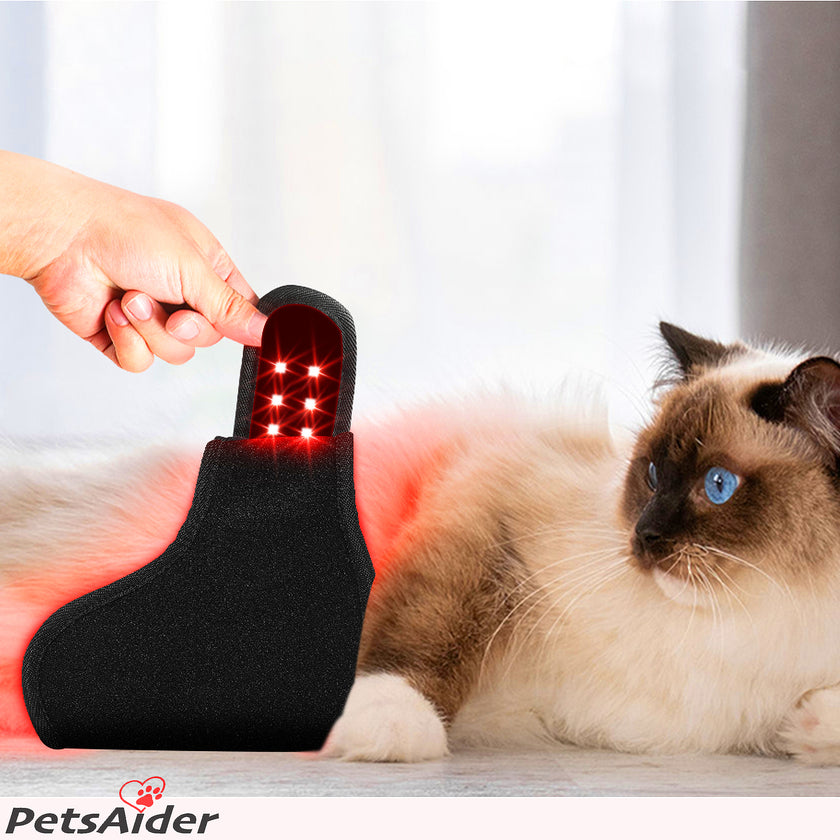Are Pet Red Light Therapy Treatments Supported by Clinical Research?

Yes, pet red light therapy treatments are supported by clinical research, particularly in areas like pain relief, wound healing, and inflammation reduction.
There are various Red Light Therapy Wrapys for Pets available. they are specifically designed for horses. Choose a device that suits your needs and is easy to use.
Here are some studies that demonstrate the efficacy of red light therapy for pets, particularly dogs and cats:
1. Pain Relief and Mobility Improvement in Pets
- Study: A 2014 clinical trial published in the Journal of the American Veterinary Medical Association (JAVMA) explored the use of red light therapy for managing osteoarthritis in dogs. The study found significant improvements in mobility and reduced pain in dogs after a course of red light treatments.
- Conclusion: Red light therapy effectively reduced joint pain and improved mobility in dogs with osteoarthritis, offering a non-invasive alternative to medication.
- Source: Journal of the American Veterinary Medical Association (JAVMA), 2014.
2. Accelerated Wound Healing in Dogs
- Study: A 2009 study published in Veterinary Dermatology assessed the effects of low-level laser therapy (which includes red light therapy) on the healing of surgical wounds in dogs. The researchers found that red light therapy accelerated the healing process, reduced inflammation, and promoted tissue repair.
- Conclusion: Red light therapy enhances wound healing in dogs by promoting faster tissue regeneration and reducing inflammation.
- Source: Veterinary Dermatology, 2009.
3. Photobiomodulation for Reducing Inflammation in Pets
- Study: A 2016 study in Frontiers in Veterinary Science investigated the effects of red light therapy on chronic inflammation in both dogs and cats. The results showed that red and near-infrared light therapy helped reduce inflammation markers in animals with musculoskeletal and soft tissue injuries, leading to improved recovery times.
- Conclusion: Red light therapy is effective in reducing chronic inflammation in pets, leading to better recovery outcomes for soft tissue injuries.
- Source: Frontiers in Veterinary Science, 2016.
4. Pain Management in Cats and Dogs
- Study: In 2017, research published in the Journal of Animal Science looked at the efficacy of photobiomodulation (red and infrared light therapy) for managing pain in dogs and cats with musculoskeletal issues. The study demonstrated a reduction in pain and a decrease in the need for pain medication in animals receiving regular red light treatments.
- Conclusion: Red light therapy effectively manages pain in pets, reducing the need for pharmaceutical intervention.
- Source: Journal of Animal Science, 2017.
5. Treatment of Skin Conditions in Pets
- Study: A 2018 study explored the use of red light therapy for treating chronic skin conditions like dermatitis in pets. The results showed that red light therapy promoted healing, reduced inflammation, and helped manage symptoms of common skin conditions in both dogs and cats.
- Conclusion: Red light therapy is a beneficial treatment for managing and healing chronic skin conditions in pets.
- Source: Veterinary Therapeutics, 2018.
How Red Light Therapy Works for Pets:
Red light therapy works by emitting specific wavelengths of light that penetrate the skin and tissues. This light energy stimulates cellular activity, increasing blood flow, promoting cell regeneration, and reducing inflammation. In pets, it has been shown to:
- Improve tissue repair and wound healing
- Reduce pain and inflammation in joints and muscles
- Enhance recovery from surgeries and injuries
- Treat skin infections, irritations, and chronic conditions
Veterinary Use and Support:
Veterinarians increasingly recommend red light therapy as a complementary treatment, especially for pets with chronic conditions like arthritis or recovering from surgery. It is non-invasive, safe, and generally well-tolerated by pets.
In summary, clinical research supports the effectiveness of red light therapy for treating various conditions in pets, including pain management, wound healing, and inflammation reduction. Its non-invasive nature and lack of side effects make it a promising option for many pet owners.


